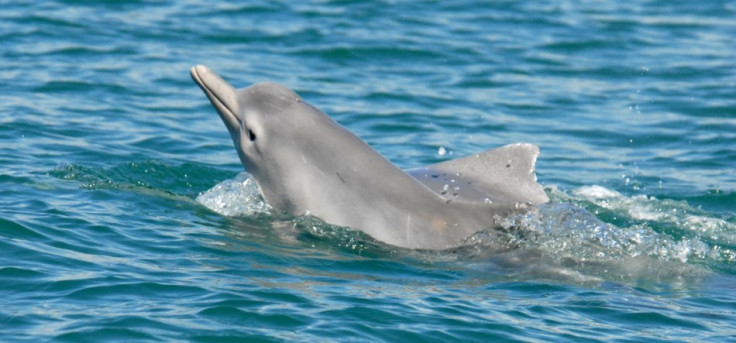Australia: Scientists Discover New Species of Humpback Dolphin [PHOTOS]
Dolphin identified swimming in waters off northern Australia

A new species of dolphin has been discovered swimming off the coast of northern Australia.
The species, which is yet to be named, is a type of humpback dolphin previously unknown to science.
It was discovered by a team from the Wildlife Conservation Society and the American Museum of Natural History, along with other contributing groups.
Humpback dolphins have a peculiar hump just below their dorsal fin. Researchers identified the new species by examining the evolutionary history of the humpback family using physical features and genetic data.

The researchers say they have the best evidence to date to show there are at least three separate species of Indo-Pacific humpback dolphin, one of which is completely new to science.
The three species already identified include Sousa teuszii, which lives in the eastern Atlantic off West Africa, Sousa plumbea, which ranges from the central to the western Indian Ocean, and Sousa chinensis, which inhabits the eastern Indian and western Pacific ocean.
The authors looked a physical data gathered from beached dolphins and museum specimens, including 180 skulls covering most of the humpback distribution area to look at differences between regions.
Researchers also collected 235 tissue samples to analyse DNA to find variations between populations.

Martin Mendez, lead author of the study, said: "Based on the findings of our combined morphological and genetic analyses, we can suggest that the humpback dolphin genus includes at least four member species.
"This discovery helps our understanding of the evolutionary history of this group and informs conservation policies to help safeguard each of the species."
Howard Rosenbaum, director of the WCS Ocean Giants programme, said: "New information about distinct species across the entire range of humpback dolphins will increase the number of recognised species, and provides the needed scientific evidence for management decisions aimed at protecting their unique genetic diversity and associated important habitats."
© Copyright IBTimes 2025. All rights reserved.





















